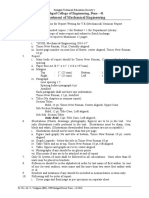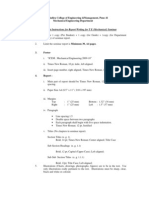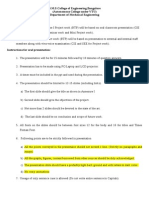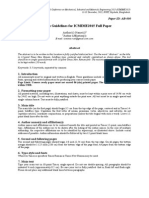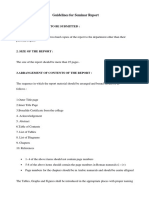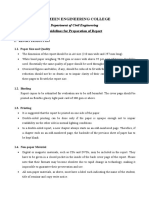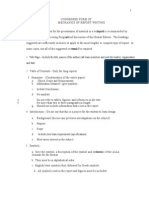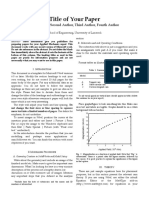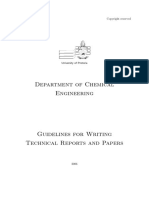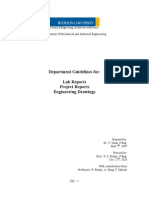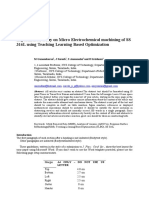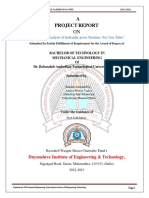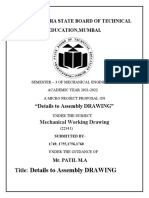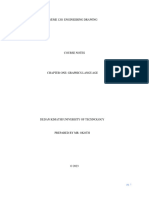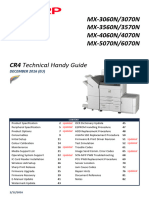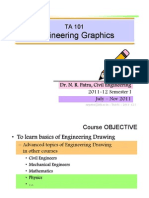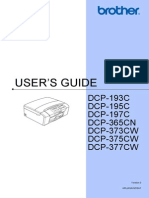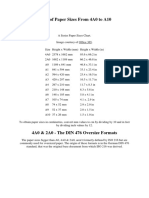0% found this document useful (0 votes)
305 views5 pagesSeminar Report Format and Content
The document provides instructions for writing a seminar report for an undergraduate mechanical engineering program, outlining the required sections, formatting guidelines, and content including an abstract, introduction, body, case study, summary and conclusions, and references section. Specifications are given for page layout, fonts, spacing, illustrations, units, pagination, and reference styles. The report aims to standardize the seminar paper format for all mechanical engineering students.
Uploaded by
udayCopyright
© © All Rights Reserved
We take content rights seriously. If you suspect this is your content, claim it here.
Available Formats
Download as PDF, TXT or read online on Scribd
0% found this document useful (0 votes)
305 views5 pagesSeminar Report Format and Content
The document provides instructions for writing a seminar report for an undergraduate mechanical engineering program, outlining the required sections, formatting guidelines, and content including an abstract, introduction, body, case study, summary and conclusions, and references section. Specifications are given for page layout, fonts, spacing, illustrations, units, pagination, and reference styles. The report aims to standardize the seminar paper format for all mechanical engineering students.
Uploaded by
udayCopyright
© © All Rights Reserved
We take content rights seriously. If you suspect this is your content, claim it here.
Available Formats
Download as PDF, TXT or read online on Scribd
/ 5

